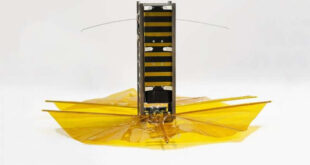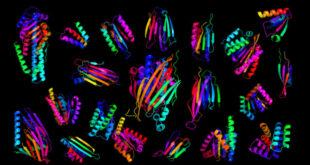A team of researchers at the University of Massachusetts Lowell has found that chicken eggshell microparticles inserted into a hydrogel matrix can be used to strengthen bone grown in a lab for use in bone grafts and other procedures.
Schematic for the fabrication of the eggshell microparticle-reinforced hydrogels and cell encapsulation in 3D. Image credit: Wu et al, doi: 10.1039/C9BM00230H.
Currently, bone grafts and substitute biomaterials hold a $2.7 billion market value globally. Worldwide, more than two million bone graft procedures are performed each year to treat patient defects, including but not limited to cancer, accidents, diseases, and war injuries.
Bone repair is crucial to restore patient functionality post-injury. Surgical treatment options are dependent on currently available bone graft materials, which have various drawbacks including their complex fabrication steps, inflexibility, lack of porosity and biofunctionality, and requirement of expensive reagents.
The current standard practice involves the use of autografts and allografts for bone defects. Patient’s own bone can be used for grafts or donor bone tissue can be transplanted for repair of damaged regions.
There are, however, a number of limitations to the existing materials and practices, which must be addressed for successful treatment.
“Our technique could one day be applied to repair bones in patients with injuries due to aging, accidents, cancer and other diseases or in military combat,” said Professor Gulden Camci-Unal, corresponding author of the study.
Through the innovative process, crushed eggshells are inserted into a hydrogel mixture that forms a miniature frame to grow bone in the laboratory to be used for bone grafts.
To do so, bone cells would be taken from the patient’s body, introduced into this substance and then cultivated in an incubator before the resulting new bone is implanted into the patient.
“Our research demonstrates that when eggshell particles — which are primarily made of calcium carbonate — are incorporated into the hydrogel mixture, they increase bone cells’ ability to grow and harden, which could potentially result in faster healing,” Professor Camci-Unal said.
“And, because the bone would be generated from cells taken from the patient, the possibility the individual’s immune system would reject the new material is greatly reduced.”
The process could also be used to help grow cartilage, teeth and tendons.
“This is the first study that uses eggshell particles in a hydrogel matrix for bone repair,” Professor Camci-Unal said.
“We have already filed a patent for it and are very excited about our results. We anticipate the process can be adapted for use in many significant ways.”
“Global waste of discarded eggshells typically amounts to millions of tons annually form household and commercial cooking,” she said.
“By repurposing them, we can directly benefit the economy and the environment while providing a sustainable solution to unmet clinical needs.”
The study was published in the journal Biomaterials Science.
_____
Xinchen Wu et al. 2019. Eggshell particle-reinforced hydrogels for bone tissue engineering: an orthogonal approach. Biomaterials Science 7: 2675-2685; doi: 10.1039/C9BM00230H
 #Bizwhiznetwork.com Innovation ΛI |Technology News
#Bizwhiznetwork.com Innovation ΛI |Technology News




